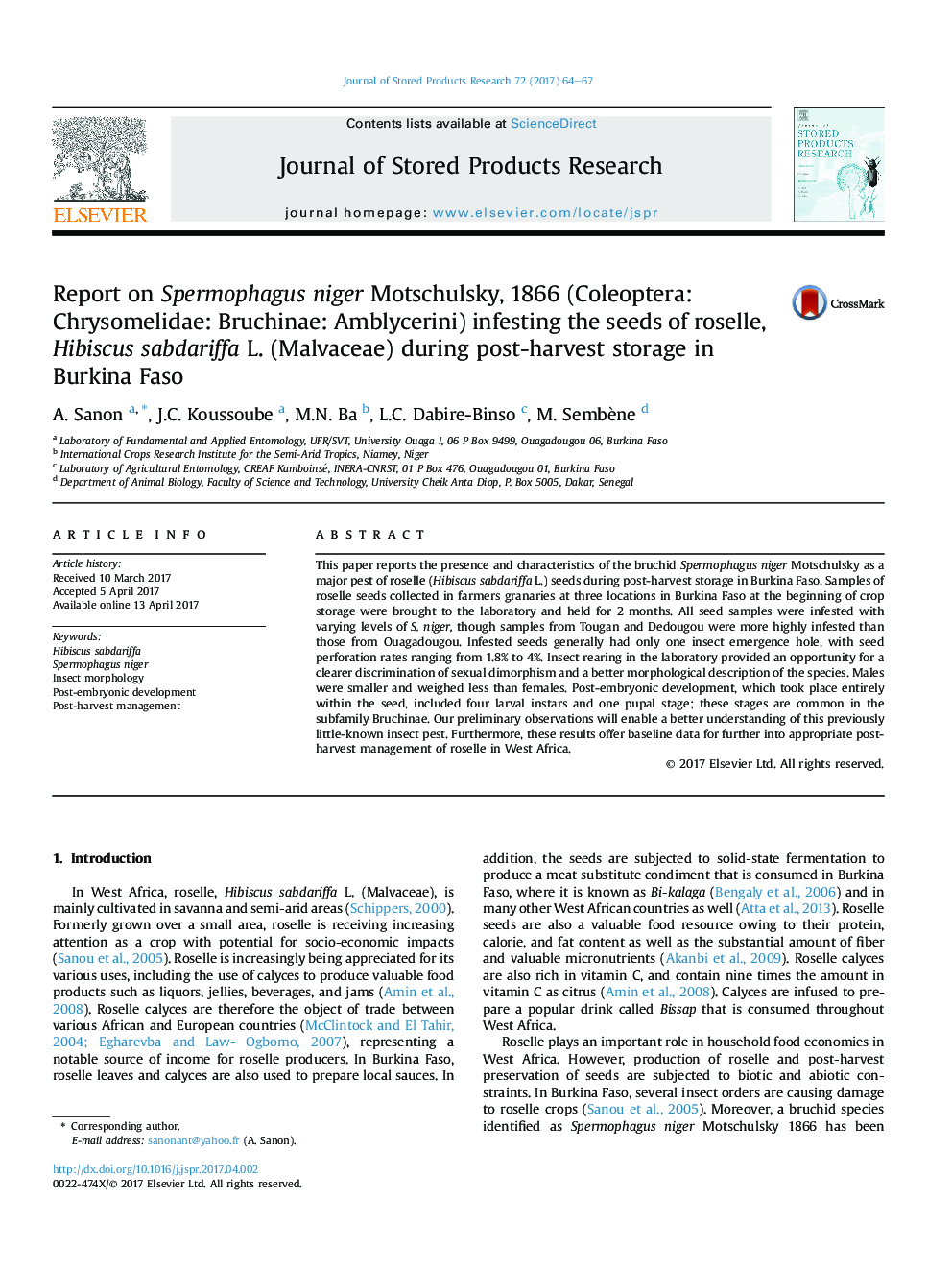| Article ID | Journal | Published Year | Pages | File Type |
|---|---|---|---|---|
| 5762575 | Journal of Stored Products Research | 2017 | 4 Pages |
â¢S. niger infested all roselle seeds samples taken in three locations of Burkina Faso.â¢Seed perforation rates varied among samples from 1.8 to 4% according to their location.â¢S. niger develops fully in the roselle seeds through four larval stages and a pupal stage.â¢There is a sexual dimorphism in S. niger based on body size, weight and the shape of pygidium.
This paper reports the presence and characteristics of the bruchid Spermophagus niger Motschulsky as a major pest of roselle (Hibiscus sabdariffa L.) seeds during post-harvest storage in Burkina Faso. Samples of roselle seeds collected in farmers granaries at three locations in Burkina Faso at the beginning of crop storage were brought to the laboratory and held for 2 months. All seed samples were infested with varying levels of S. niger, though samples from Tougan and Dedougou were more highly infested than those from Ouagadougou. Infested seeds generally had only one insect emergence hole, with seed perforation rates ranging from 1.8% to 4%. Insect rearing in the laboratory provided an opportunity for a clearer discrimination of sexual dimorphism and a better morphological description of the species. Males were smaller and weighed less than females. Post-embryonic development, which took place entirely within the seed, included four larval instars and one pupal stage; these stages are common in the subfamily Bruchinae. Our preliminary observations will enable a better understanding of this previously little-known insect pest. Furthermore, these results offer baseline data for further into appropriate post-harvest management of roselle in West Africa.
Graphical abstractDownload high-res image (345KB)Download full-size image
